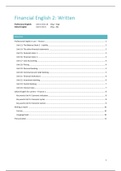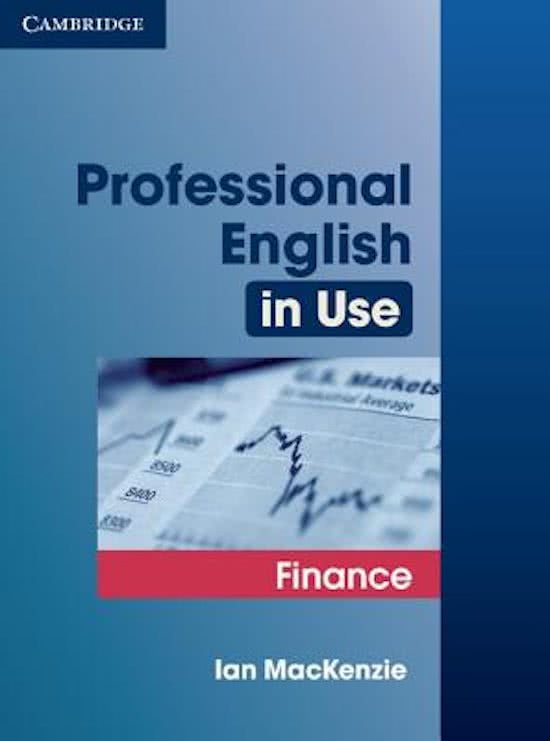Resume
Samenvatting Financial English 2 Written
- Cours
- Établissement
- Book
Woordenlijst Financial English 2 voor Finance & Control aan Inholland ('19-'20) PE: unit 13 t/m 24 (begrip engelse definitie volgens boek) OX: unit 4 t/m 6 (keywords: begrip nederlandse vertaling) Ook inbegrepen: pronunciation en structuur van een report
[Montrer plus]




